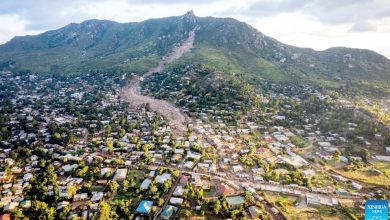Solar mini grid powers calls for clean cooking
Sitolo villagers in Mchinji District have asked government and partners to make clean cooking technologies a part of rural electrification.
From simple chitetezo mbaula to electric cookstoves, cutbacks on firewood save the environment and human health. However, many villagers at the source of Bua River still cook using firewood and charcoal as do 90 percent of households in the country.

The loss of trees dims the wonders of the 80-kilowatt Sitolo Solar Minigrid, which supplies about 850 clients in the rural community, almost 15 kilometres from the national grid run by Electricity Supply Corporation of Malawi (Escom).
The connections include grass-thatched houses that do not leak, two maize mills and a cooking oil expeller.
Even at night, farmers, businesspersons and youthful entrepreneurs can be seen hard at work in a race to end hunger and poverty.
This exemplifies how harnessing decentralised renewable energy solutions could accelerate rural electrification.
“Since we switched to solar power five years ago, our livelihoods are improving and some people are switching from open fires fuelled by firewood and charcoal to hotplates. We are tired of smoky kitchens, but rural electrification should be accompanied with affordable clean cooking solutions to save trees that refresh the air we breathe and protect our fertile farmland and water sources.”
Every hectare in the country loses about 30 tonnes of topsoil annually, reports the Food and Agriculture Organisation of the United Nations. However, it takes a century to replenish it.
This shows how environmental degradation affects farmers who feed the nation and power the economy. However, soil erosion and water stress threaten this dividend.
Sitolo villagers grow onions, potatoes, tomatoes and other high-value crops along Bua.
The loss of green cover increasingly leaves their fertile alluvial fields eroded and rivers silted, living them prone to flooding.
The valley include irrigable plots that gave rise to an agri-business that guarantees Anne Nyendwa and her husband, Chambulira, makes a profit of K1.3 million a week.
The couple also owns a shop where they sell assorted goods including cold drinks chilled in a deep freezer powered by solar energy.
Nyendwa rues decades of low earnings due to a futile wait for Escom grid expansion from a T-junction off the Lilongwe-Mchinji Road to her village.
“Solar energy is a big win for us. We do business beyond sunset and invest our earnings in farming for more profits. However, farming will collapse if trees disappear. We need to save the environment,” she says.
Community Energy Malawi (CEM) installed Sitolo Minigrid with funding from the United Nations Development Programme through the Ministry of Energy.
CEM engineer Peter Banda says financing is available to double power generation to 160 kilowatts for 1 500 connections.
He envisages access to clean cooking solutions to expand as connected households reap the dividends of their minigrid.
Until 2020, extending the national grid had only delivered electricity to 11.5 percent of the population, supplying just four percent of the rural majority in 40 years since the rollout of the Malawi Rural Electrification Programme in 1980.
The Ministry of Energy estimates access to electricity has more than doubled to 25 percent since 2020.





